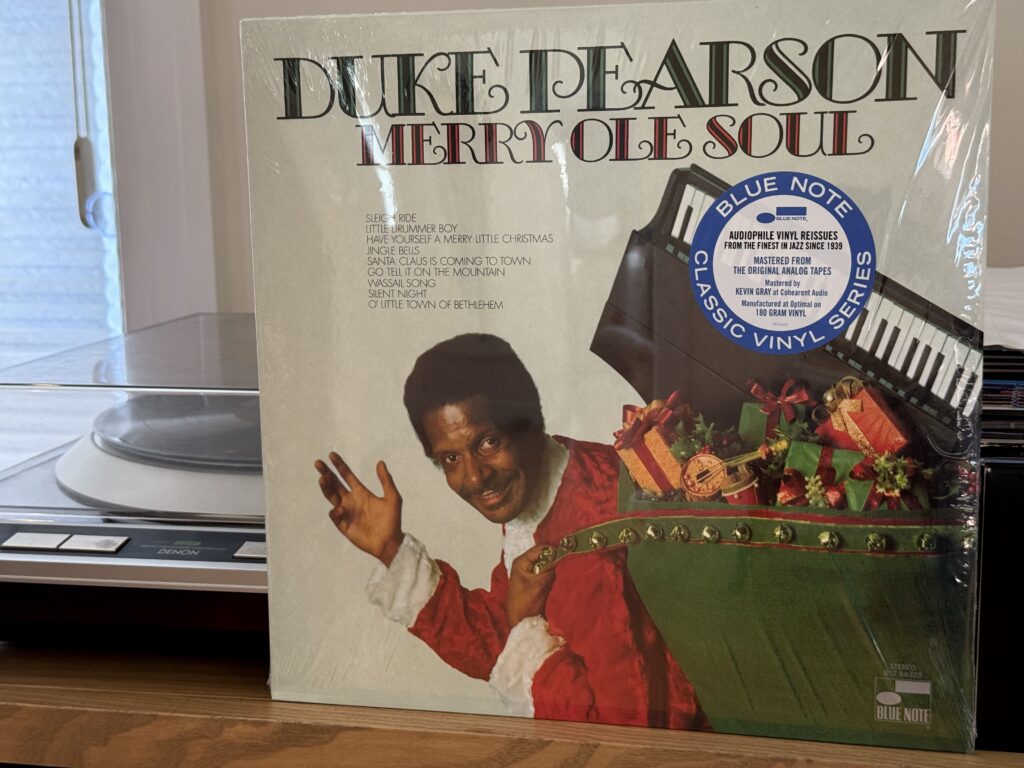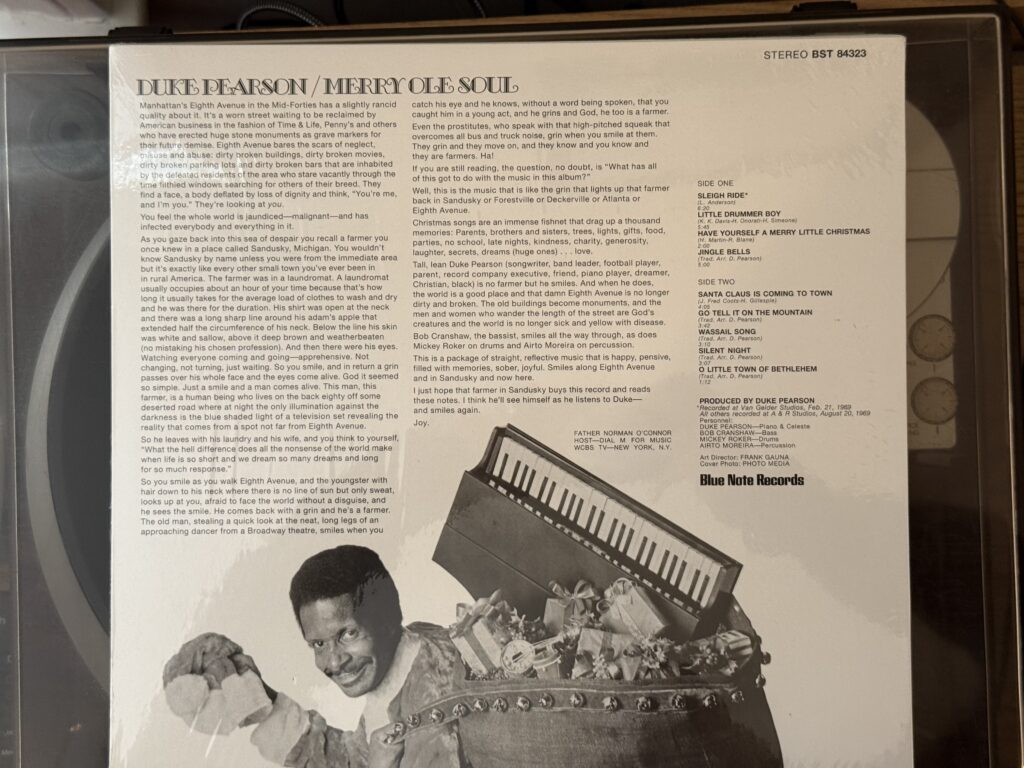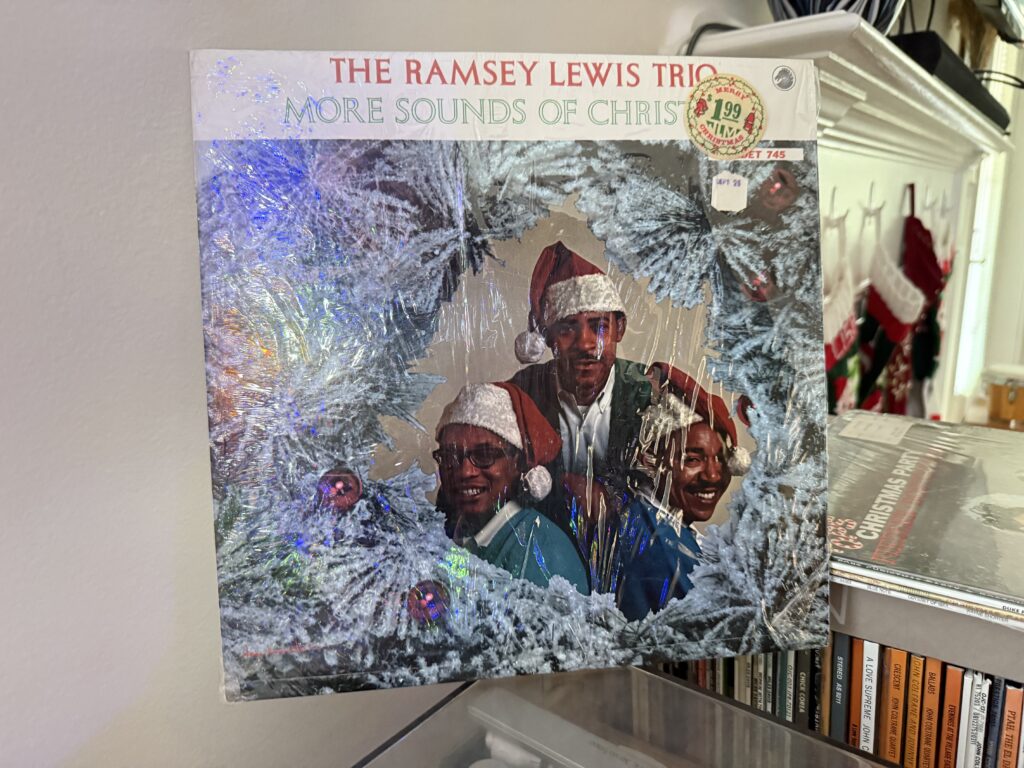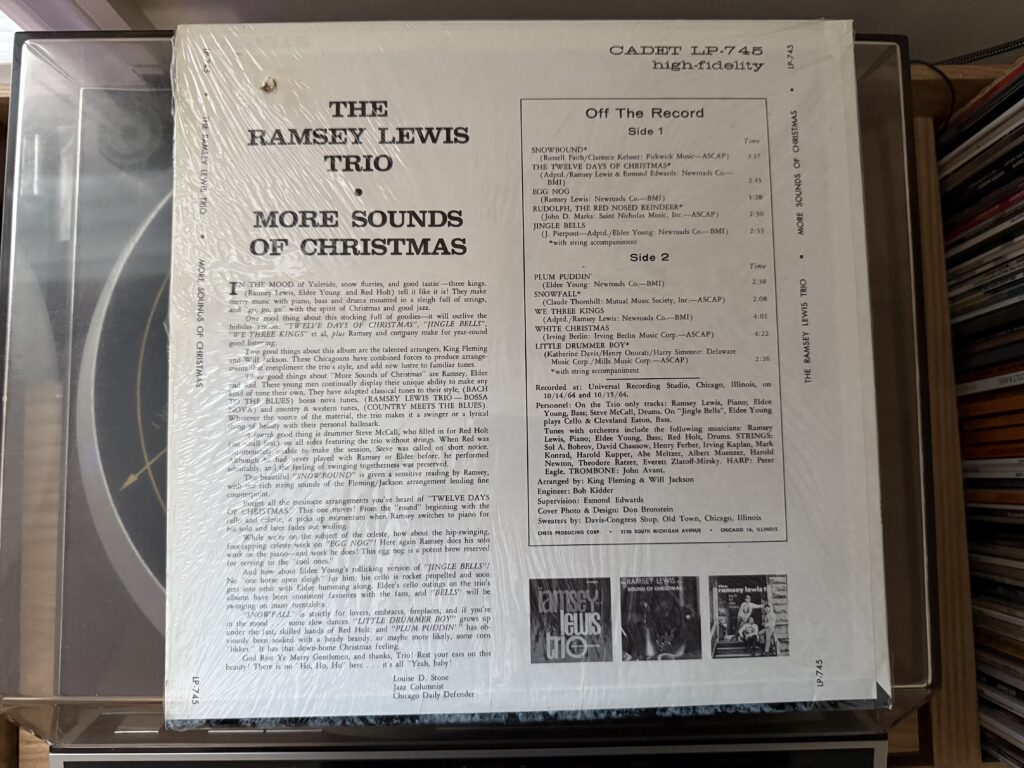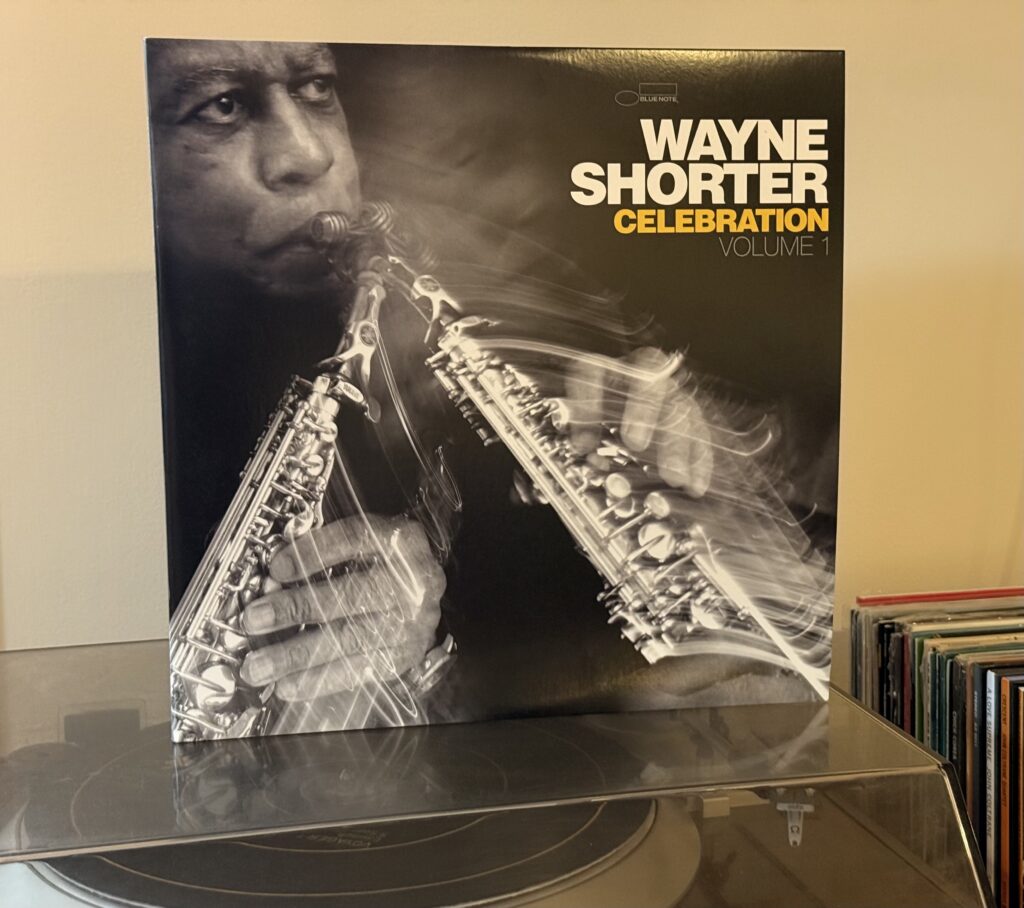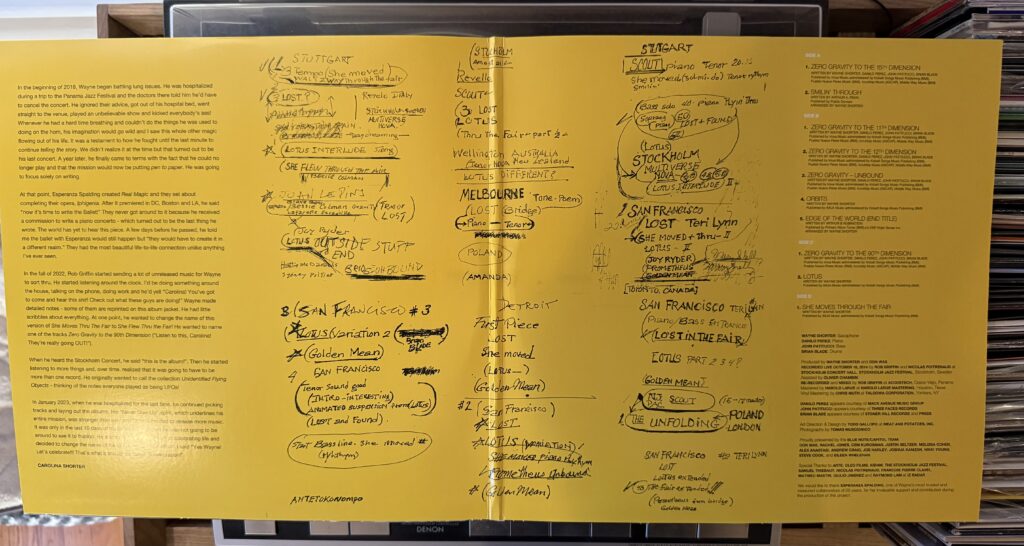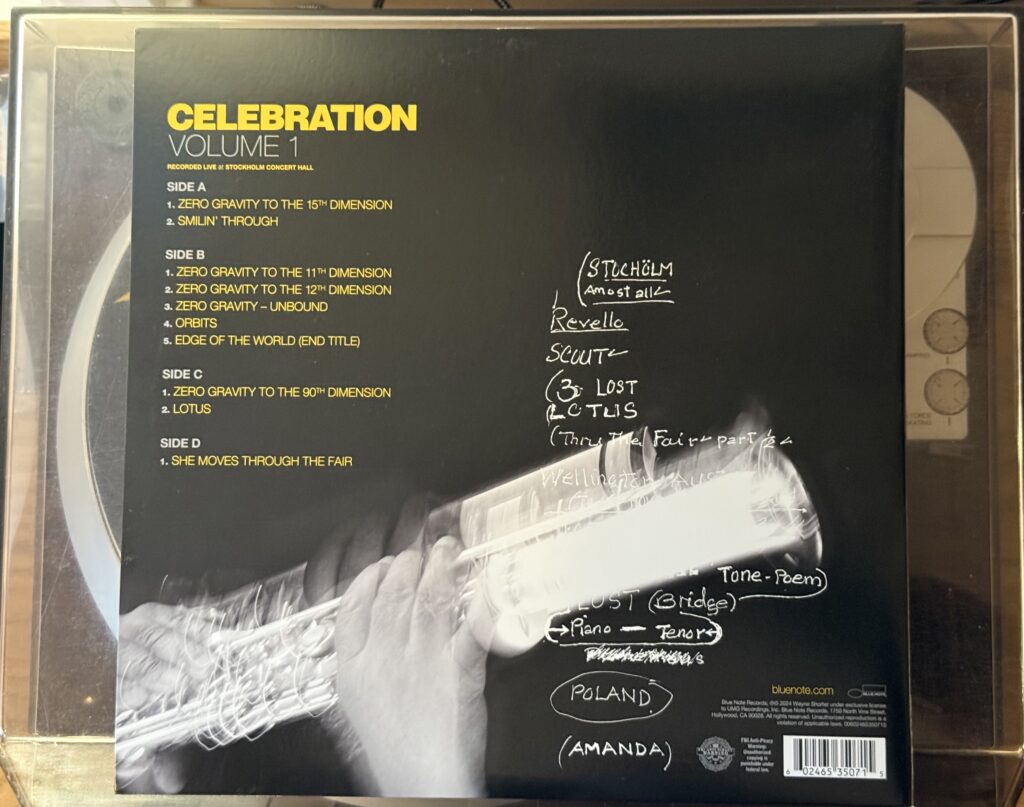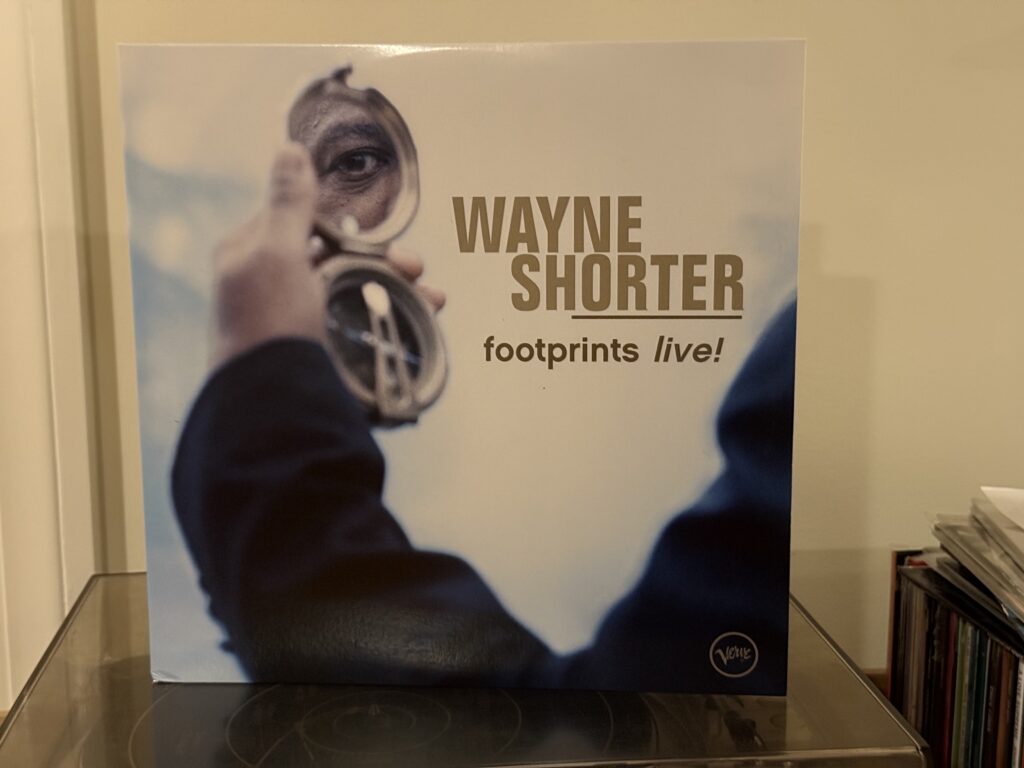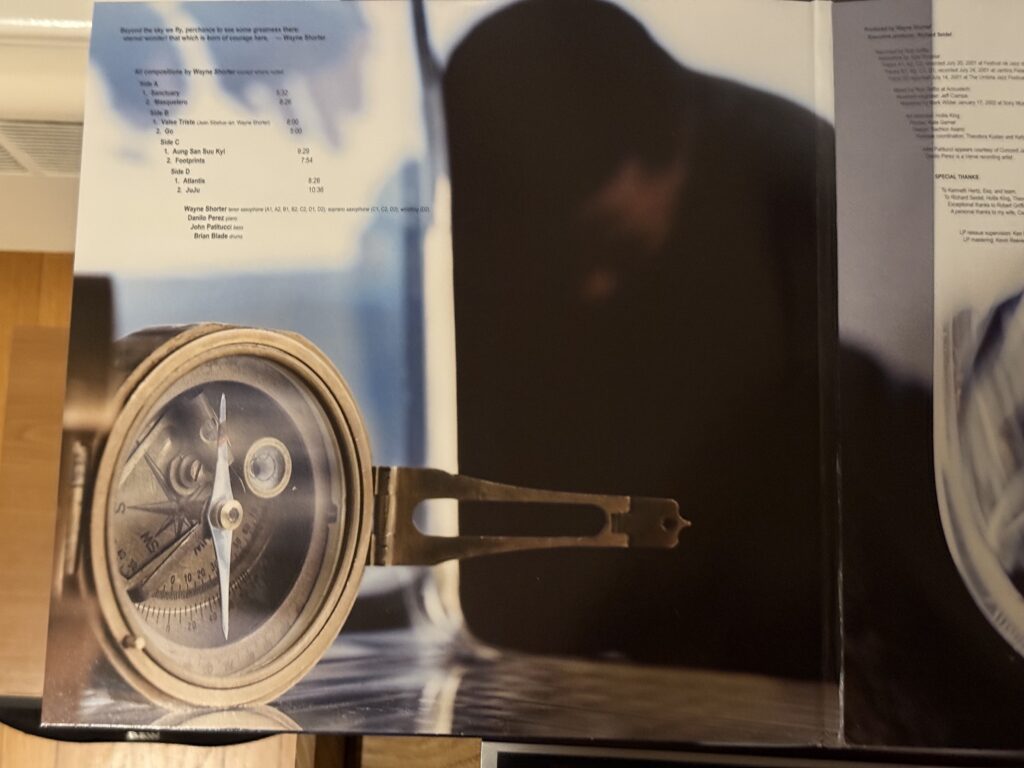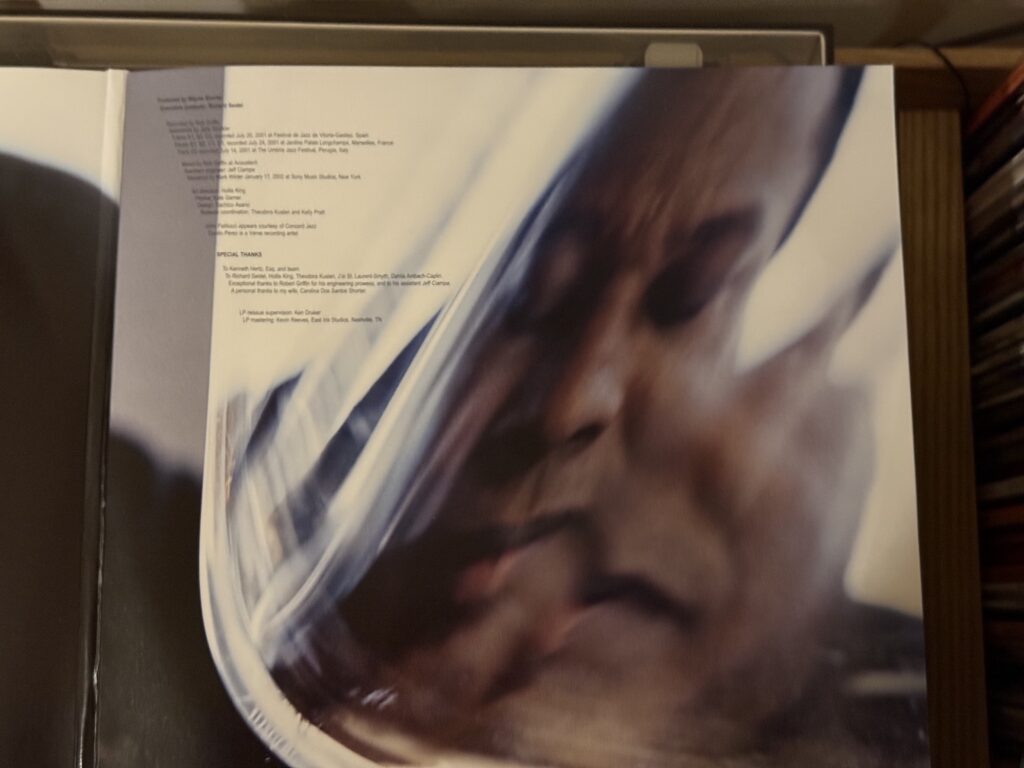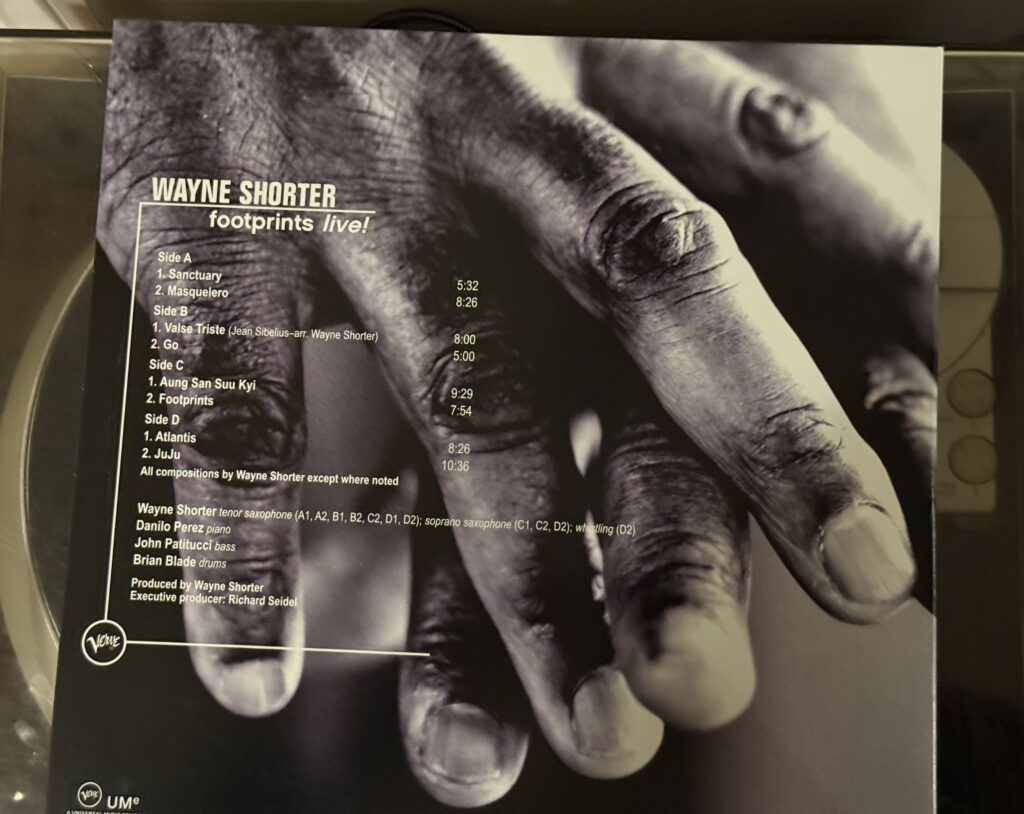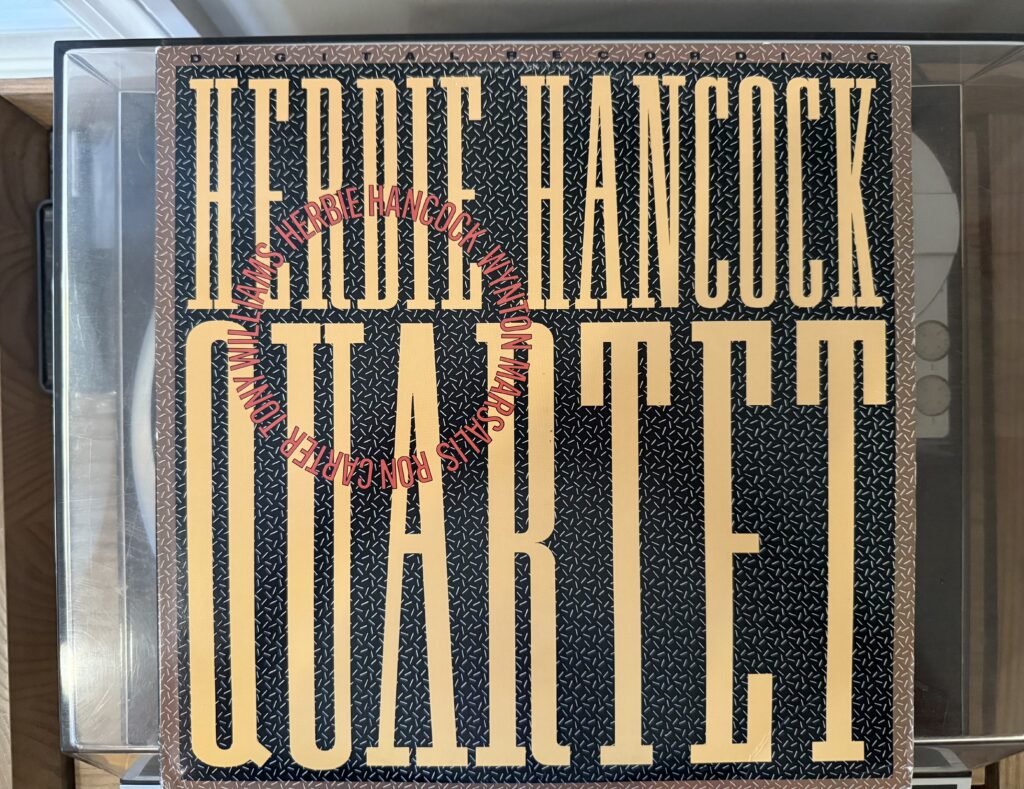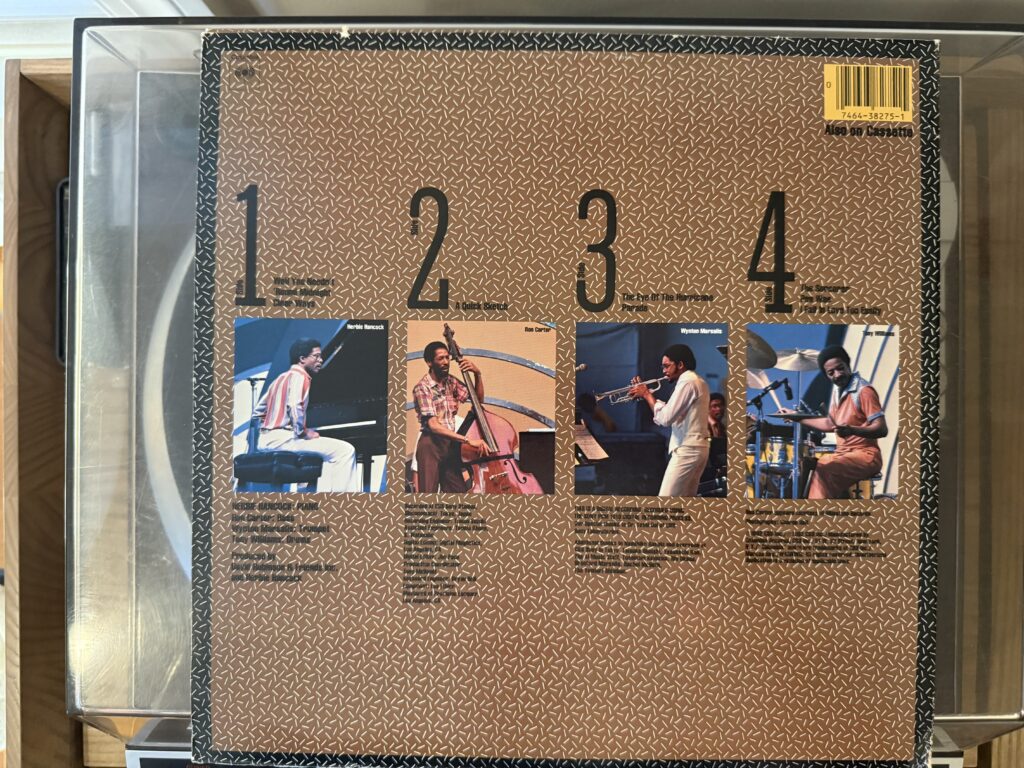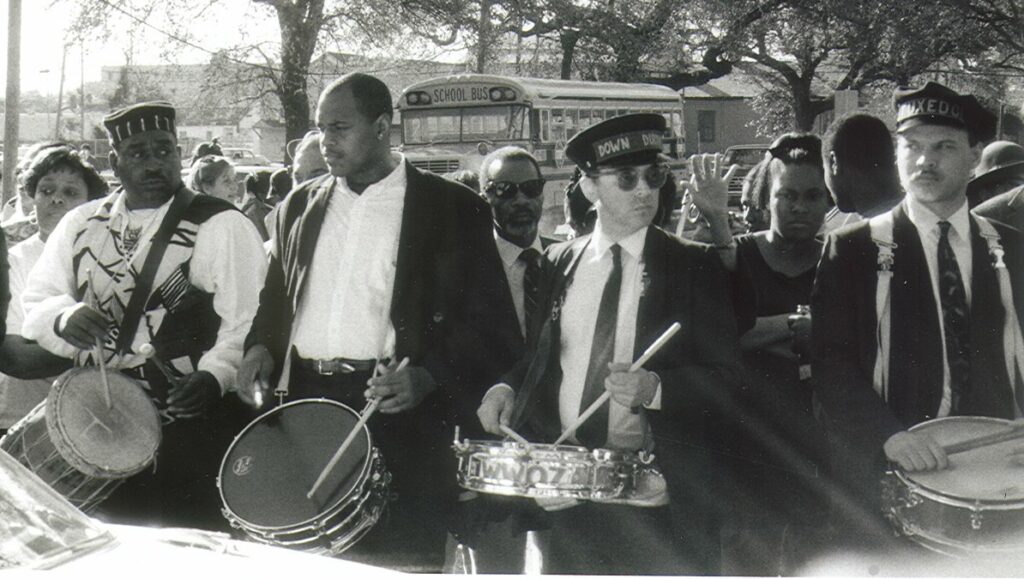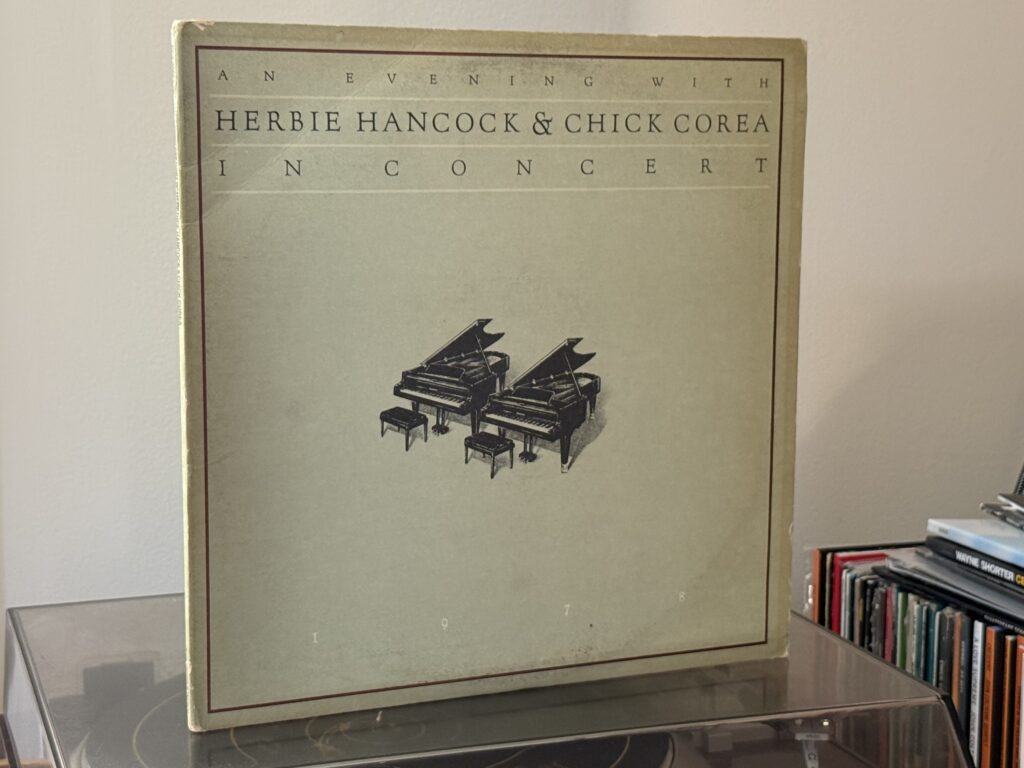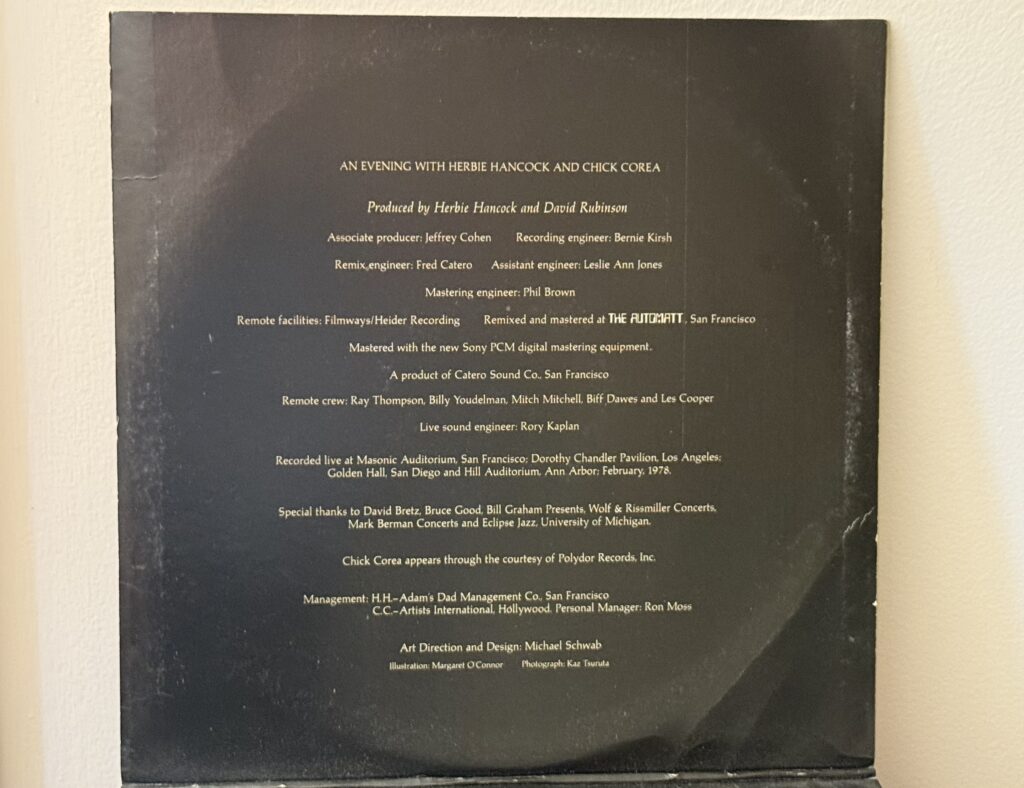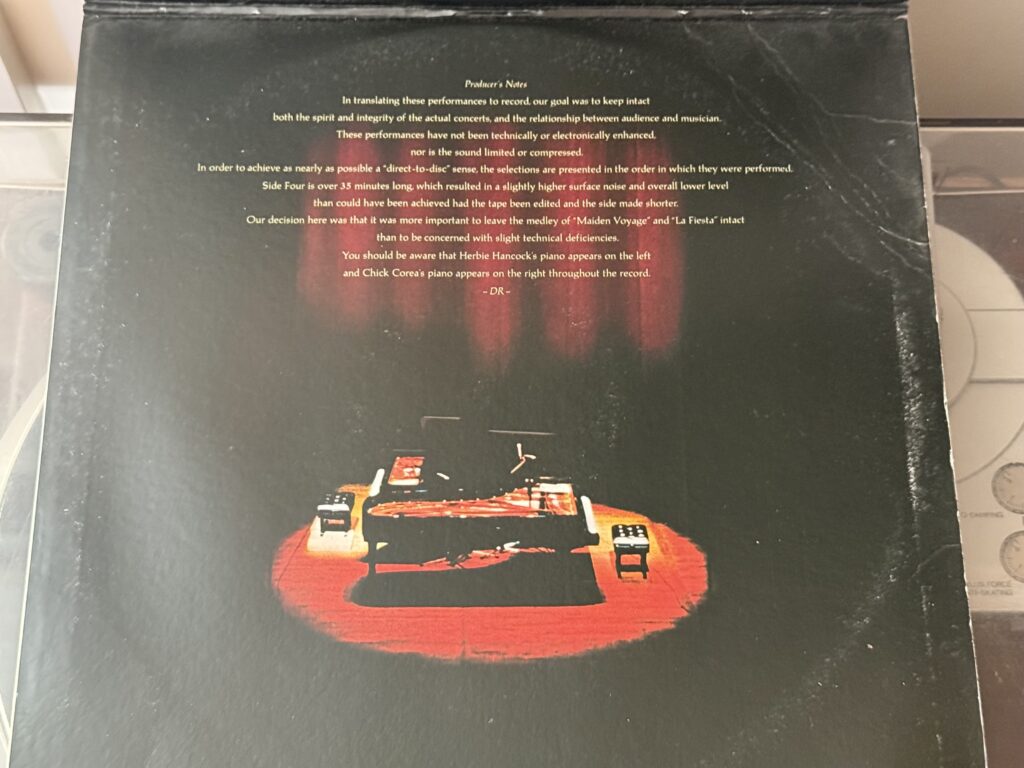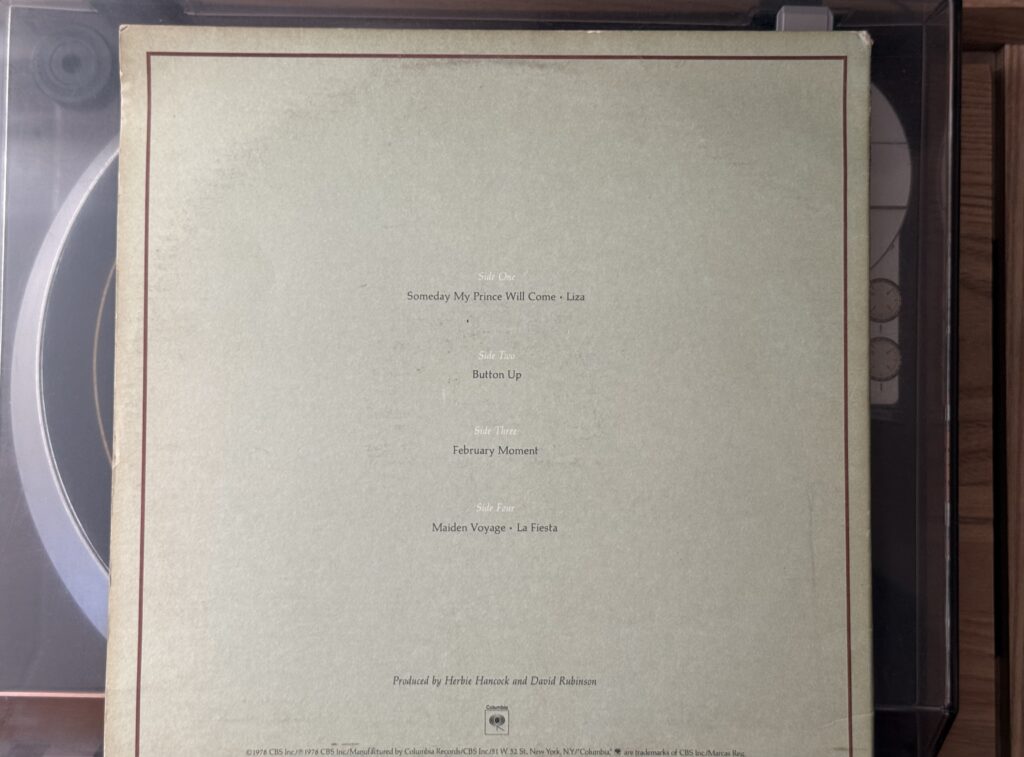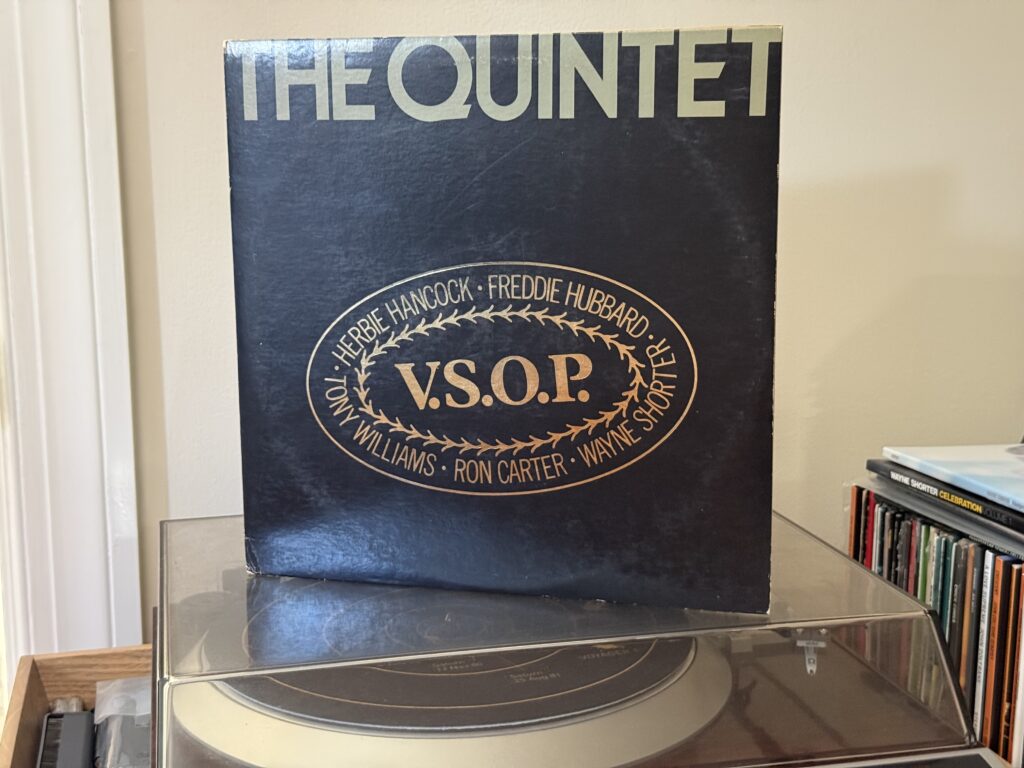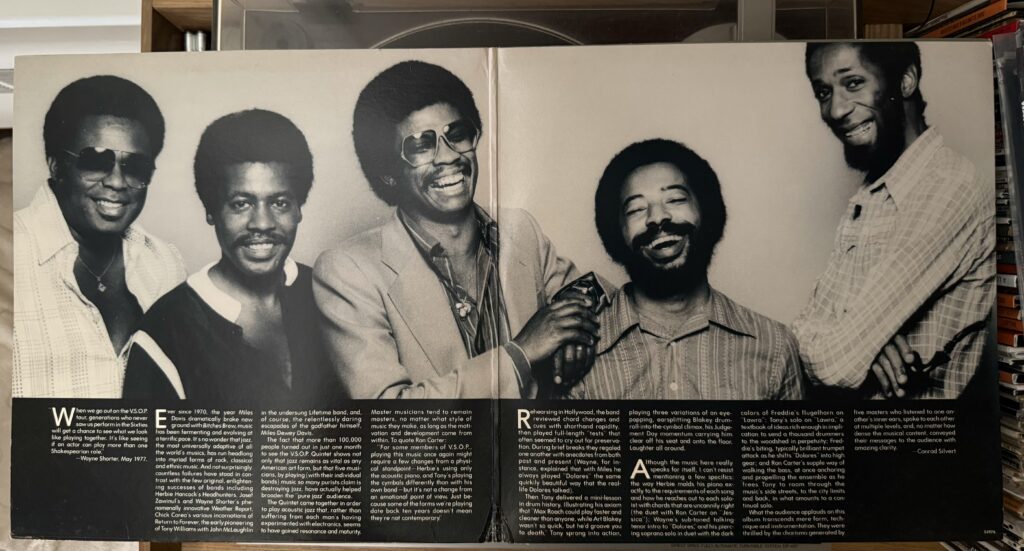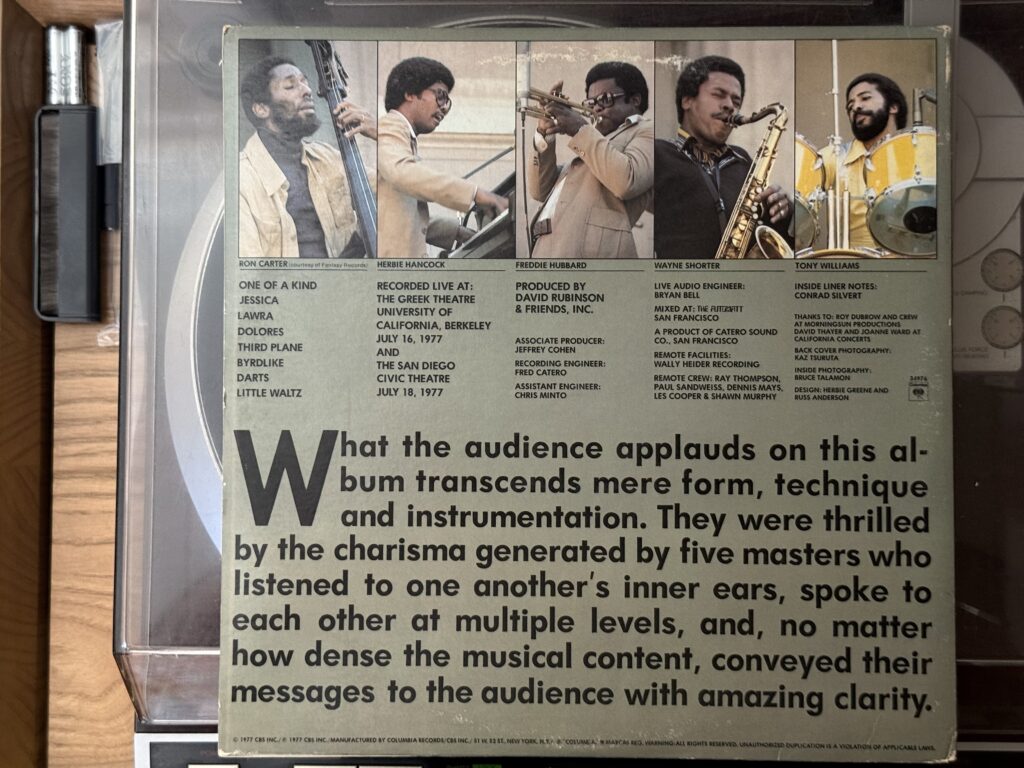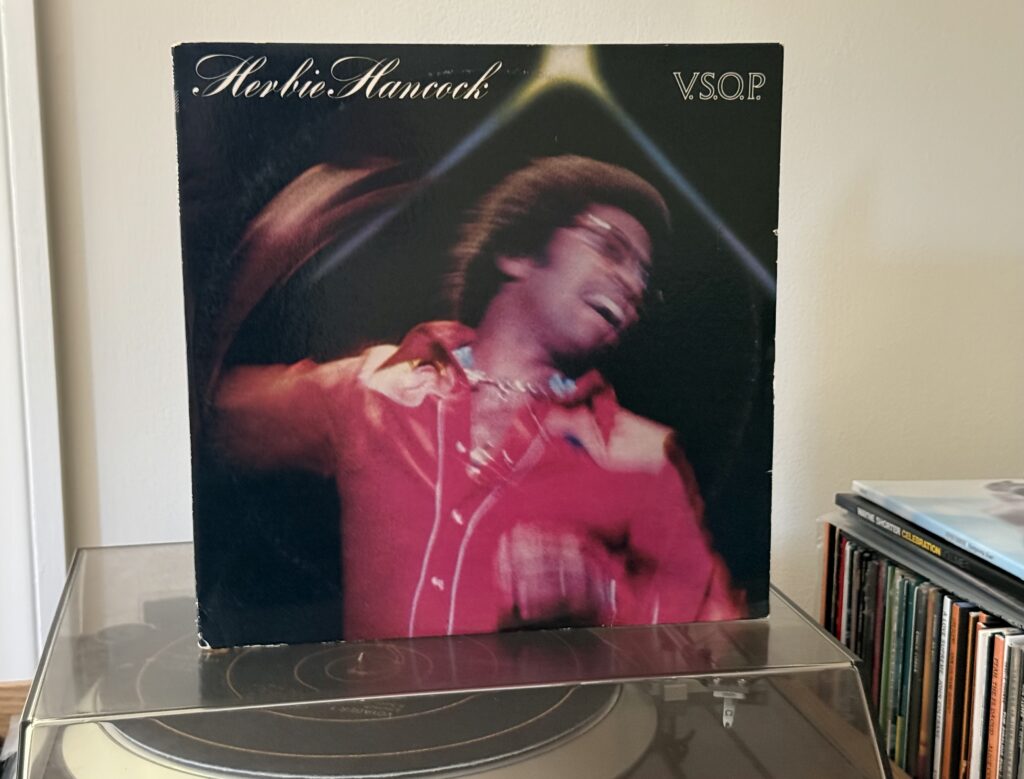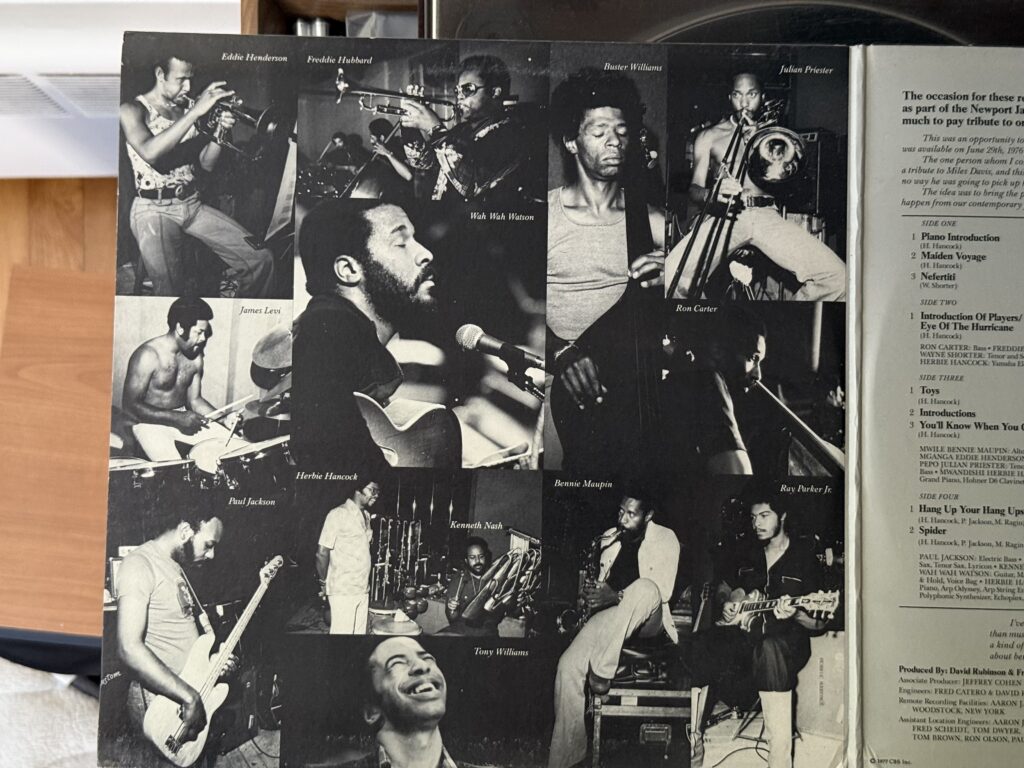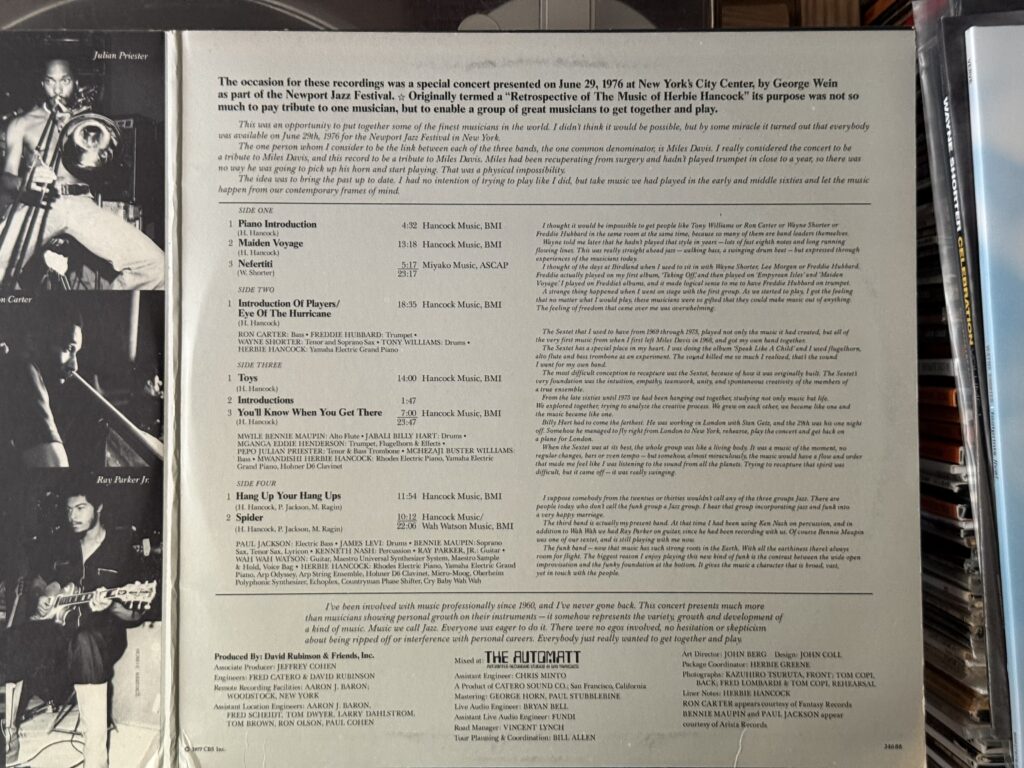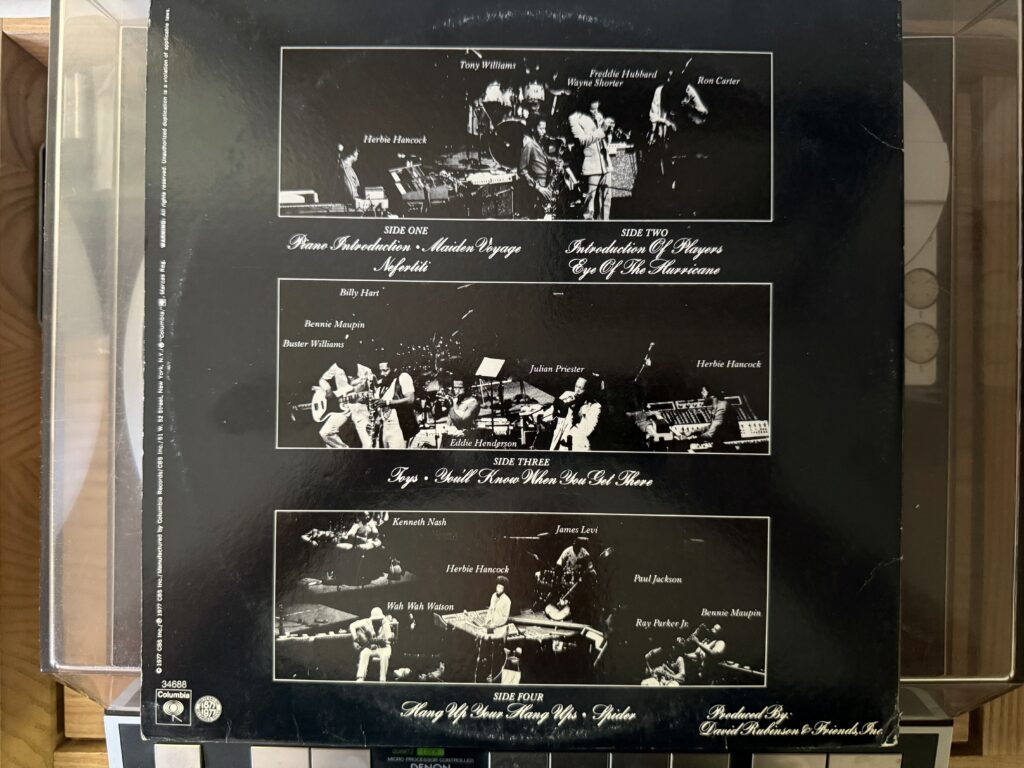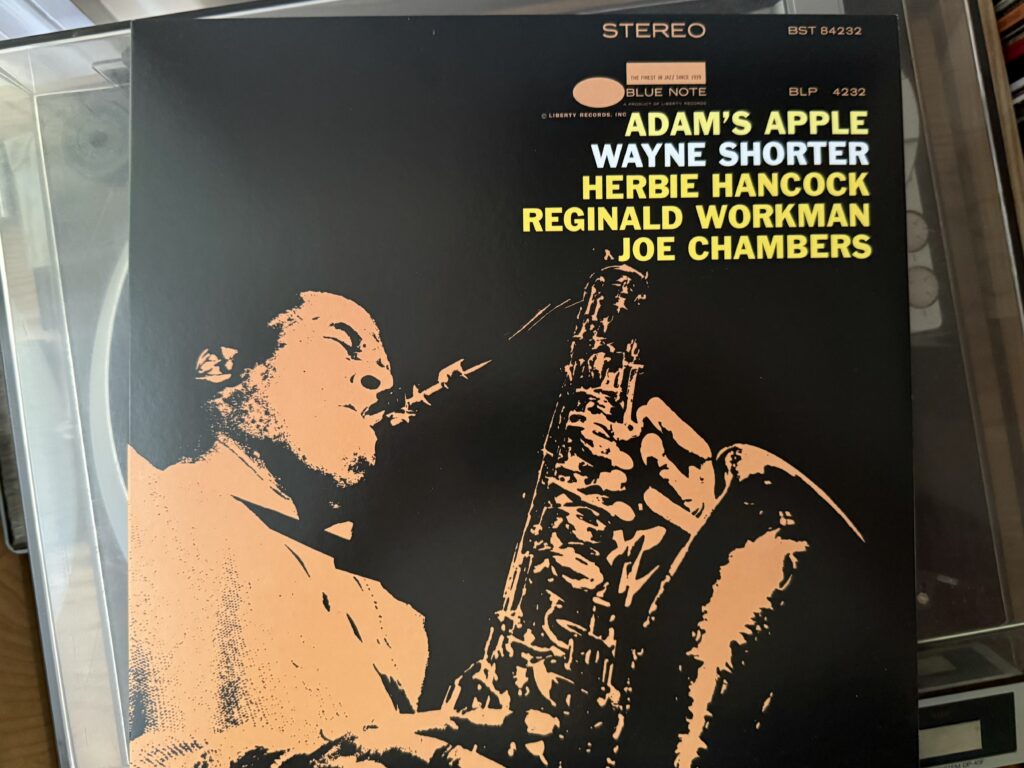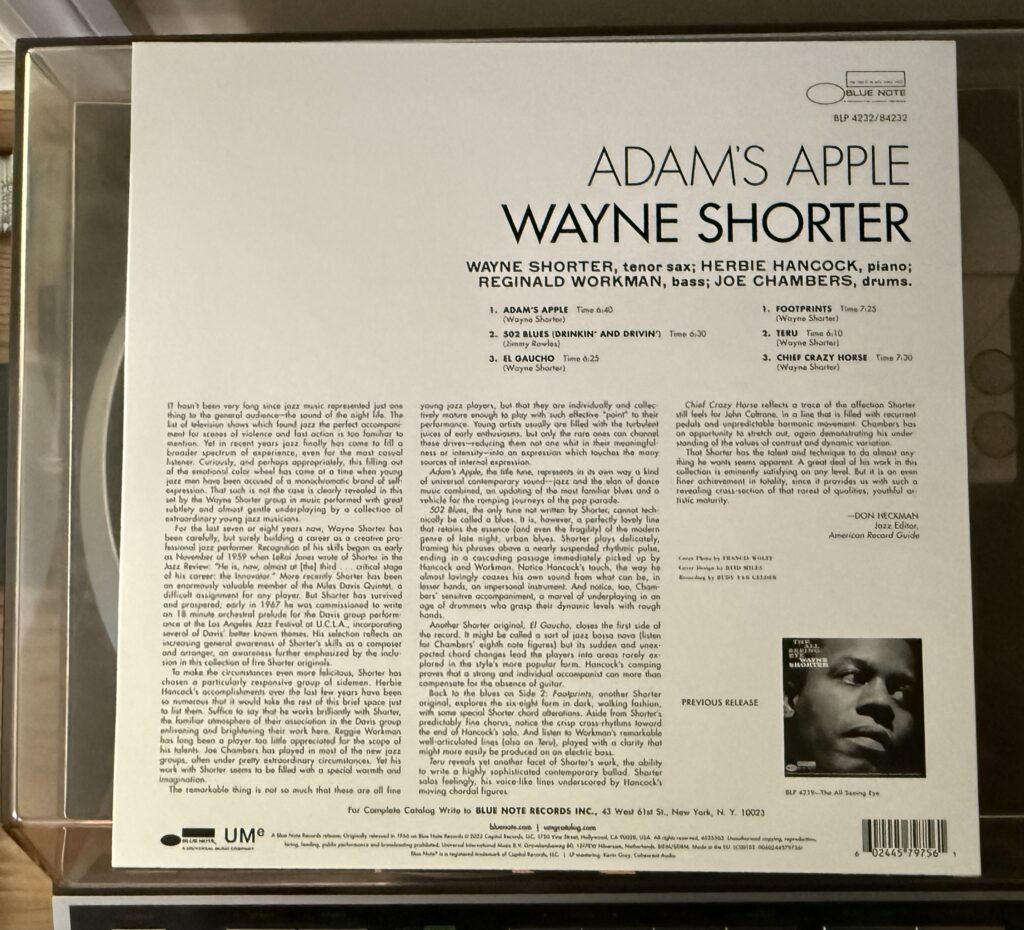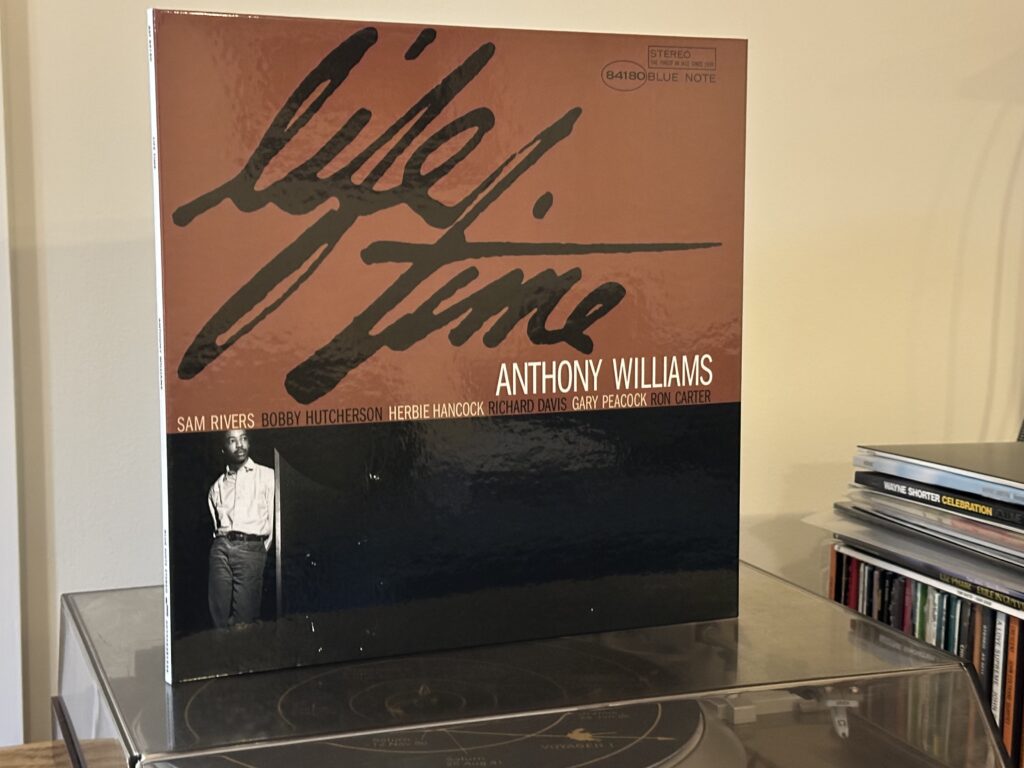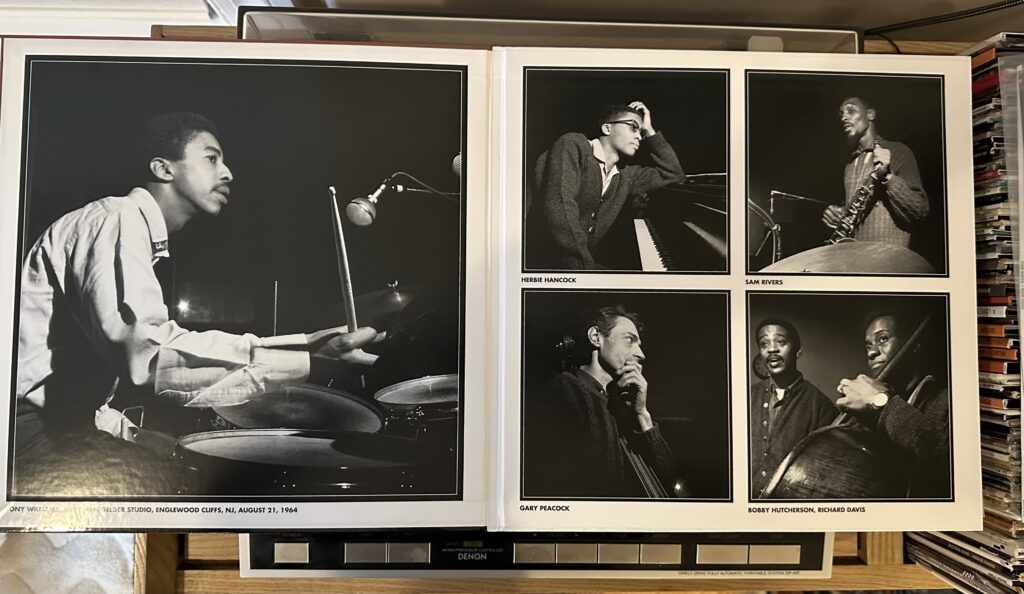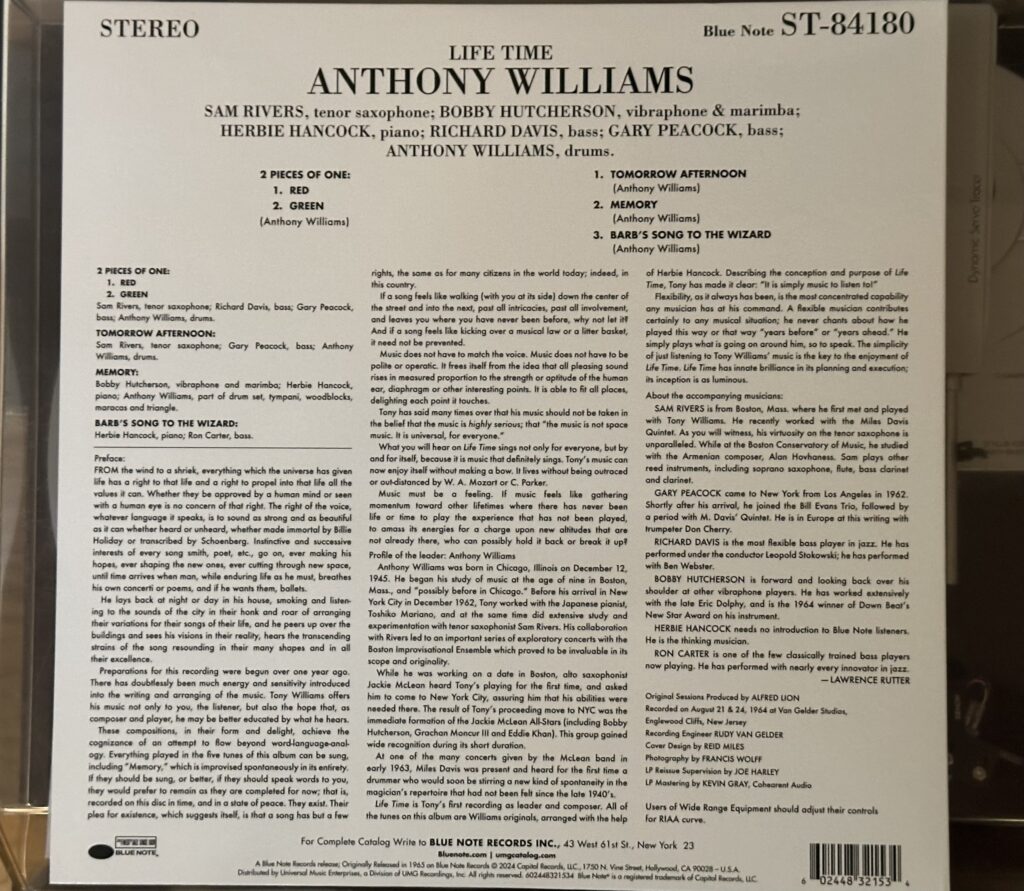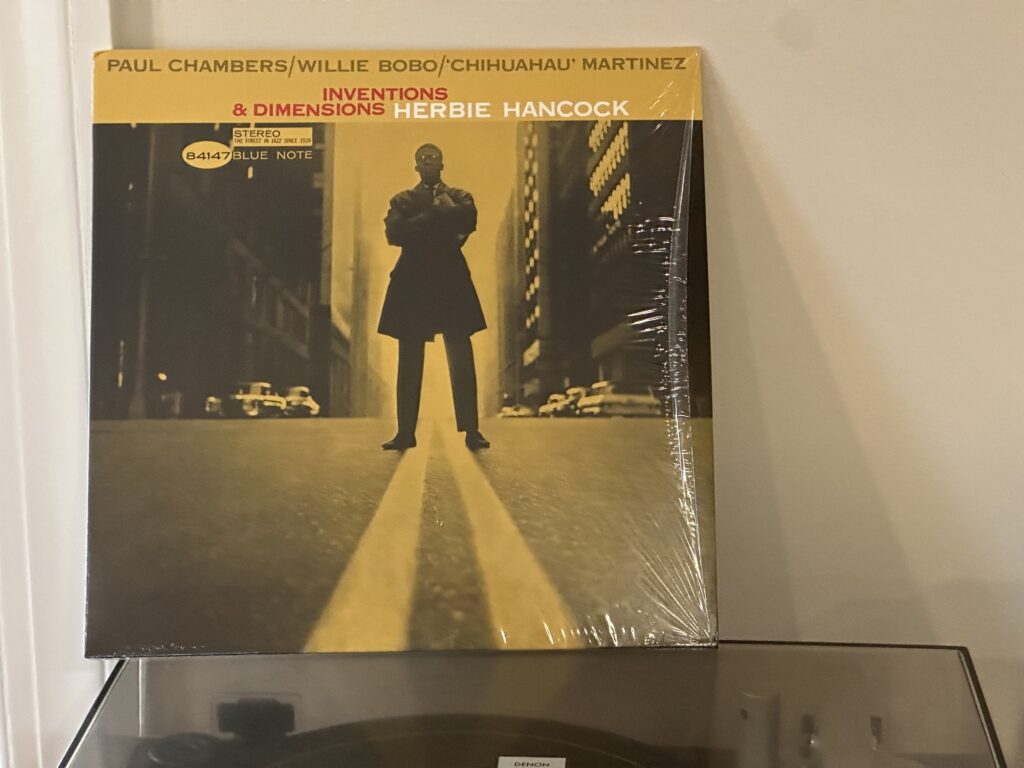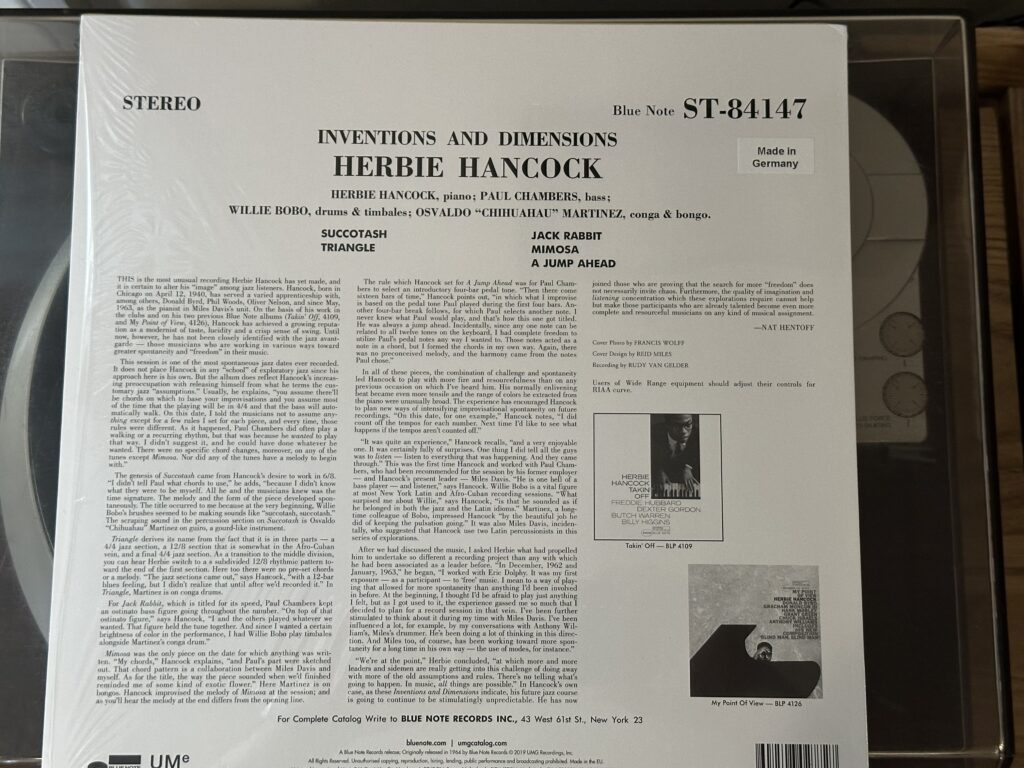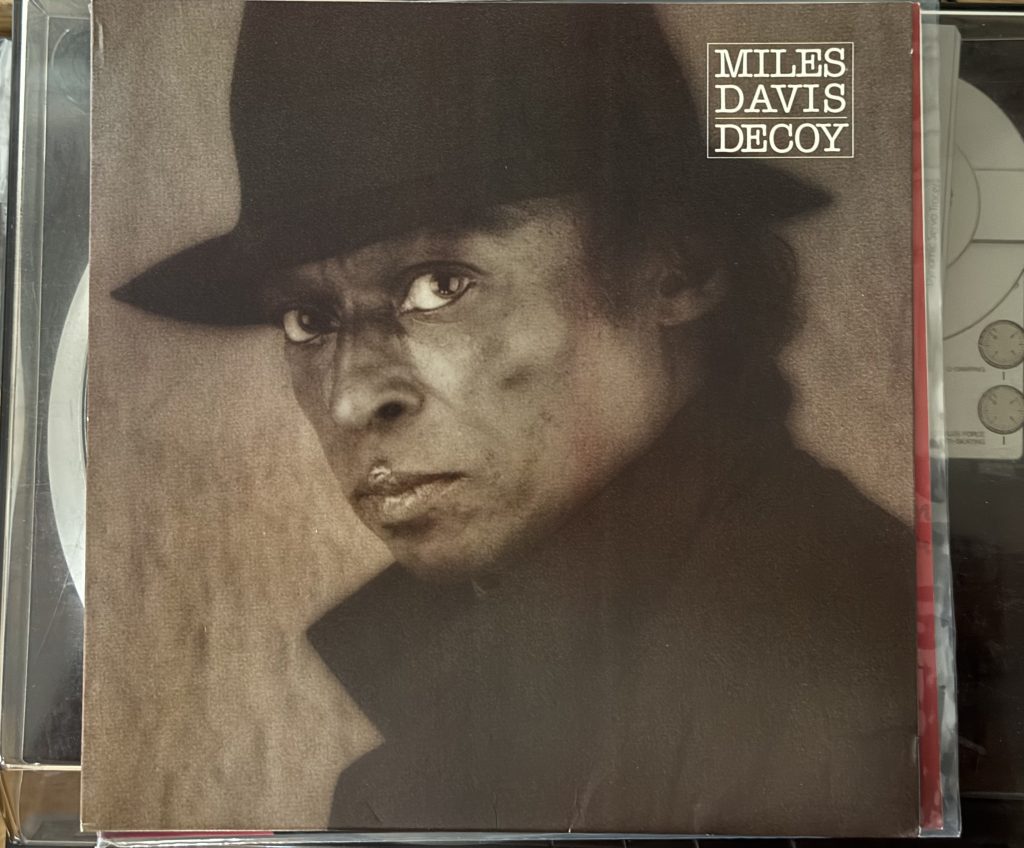
Album of the Week, March 1, 2025
It was bound to happen. After two months of pop music we’re right back with Miles. That’s no accident; as Sting left the Police behind for a solo career, he sought out jazz musicians, and found several of them in Miles’ band.
The last Miles album, in his recording chronology, that we wrote about was Champions, recorded in 1971. Miles’ fusion years were musically exploratory and often fruitful—a listen to “He Loved Him Madly,” Miles’ tribute to Duke Ellington from the compilation Get Up With It, puts the lie to any assertion that Miles was slacking as a composer during this time. But by the same token, his worsening physical health was leaving him in constant pain, and his various addictions were taking a toll on his emotional state. Following appearances at the 1975 Newport Jazz Festival and the Schaefer Music Festival in New York, he dropped out of music.
He spent the next few years wallowing in sex and drugs, but also in finally getting a long postponed and much needed hip replacement. After a failed attempt to form a band with guitarist Larry Coryell, keyboardists Masabumi Kikuchi and George Pavilis, bassist T.M. Stevens and drummer Al Foster, he withdrew again. Finally getting back into the studio in 1980 and 1981, he released his first new album in six years, The Man with the Horn. Touring with a new group consisting of Foster, saxophonist Bill Evans (no relation), bassist Marcus Miller, and guitarist John Scofield, he recorded a few albums but suffered a relapse with alcohol that led to his having a stroke. His then-wife Cicely Tyson helped him recover and also helped him finally give up drugs and alcohol.
He also heard what his erstwhile collaborator Herbie Hancock had been doing in the studio. Realizing that Herbie had achieved mass success and a new audience by combining jazz and hip-hop on “Rockit,” Miles set out to do the same thing on his new album Decoy, adding more synthesizers and more prominent bass, this time played by Darryl Jones, who went by the nickname “Munch.” The band was also joined by saxophonist Branford Marsalis, Wynton’s older brother; the brothers had played together in Art Blakey’s Jazz Messengers and Branford was playing in Wynton’s quintet; he recorded his debut record Scenes in the City the same year that he joined Miles in the studio.
That said, it’s a synth bassline that greets us first on “Decoy,” played by Robert Irving III, who wrote this track. There’s not much tune here, but there’s a lot of funk. When Jones’ bass comes in, it anchors and propels the track along with Foster’s insistent drumming. Miles’ trumpet is in fine form, but he spends the track interjecting two bar riffs. About halfway through, Branford Marsalis takes a solo turn on soprano saxophone. Breaking free of the robotic rhythm, he seems to fly above the dense robot-funk texture. Scofield is just another part of that texture on this track until his solo, where he raises the interest as well, but ultimately the constrained modal scale doesn’t provide enough of a melody to make the whole thing work.
Miles seems determined to keep us in robot-funk land, with the appropriately named “Robot 415,” this one a scrap of a tune that nevertheless gets him a co-writing credit along with Irving. Here he gives us another not-quite melody over the difficult meter, one that comes and goes in less than a minute.
“Code M.D.,” while still on the robotic side, has a little more of a blues melody across the two-chord vamp. It helps that Scofield is let loose much earlier on the track; his first solo enlivens the song, lifting it from something that feels like mostly backing track to a blues inflected raga. When he steps back and it’s just the horns in the pocket on the track, it feels like a holding pattern. Branford’s solo doesn’t soar quite as much here; he’s only given about sixteen bars. But we finally hear Miles take a solo, and he essays up into the upper end of the horn range, tailing off into a wistful melody at the end, and playing a modal scale against the funk. He sounds properly enlivened, in fact, right up until the track’s fade-out.
“Freaky Deaky” is credited solely to Miles, and he’s at the synthesizer over Foster and Jones, as well as playing a trumpet run through an effects pedal joining to add a little textural interest. It’s a noodle, nothing more, a sort of aimless jam, but the melody played by the trumpet is at least ear-grabbing while it’s there. I don’t know why they put it on the record, to be honest, especially after hearing the recording session version on the Miles Davis Bootleg releases, a burning blues jam in two parts.
“What It Is” shifts us into a very different gear to open Side 2, which is entirely co-written by Miles and Scofield. Recorded live at the Montréal Jazz Festival in 1983, the energy level is off the chart, and if Irving seems to be leaning against the keyboard on his cluster chords, at least there’s plenty going on in that acrobatic electric bass part, providing a proper hook. It’s saxophonist Bill Evans (no relation) here rather than Marsalis, and he plays with more abandon and less piercing fire. Miles makes the interesting choice to overdub an additional trumpet line over his solo, setting up an almost-conversation. It thickens the texture and somehow strips back a little of the urgency from his actual solo. It stops abruptly.
“That’s Right” gives us the slow-jam version of the music that Irving has been providing throughout the whole album, with a slow but funky pulse in the bass and a drum hit that mostly stays out of the way. It’s all the better to let Miles rip out a melodic line that pushes against the weird tension between the bass line, which mostly hugs the dominant (the fifth) of the scale so that the rest of the players can shift between major and minor at will, and the synths, which hover on every other degree of the scale. Scofield’s guitar is a force of nature here, beginning the solo with a bluesy skronch but quickly shifting to a more virtuosic expression and then back again. When Branford comes in, he hews more toward the virtuosic, with an occasional blues lick near the top of the range to establish continuity with Scofield’s concept. What’s interesting is that, even in this context, Branford swings, playing against the rhythm in a way that the other players don’t. It’s an interesting collision of swing and funk, which insists on a strong rhythmic pulse on the One. When Miles comes in, it’s an echo of the soaring melodies that he would have played ten years prior on tunes like “Honky Tonk.” But there he was playing against a firm rhythmic footing and a halo of odd electric textures that translated to something that was 100% blues; here the timbre of the keyboards seems to sap some of that rhythmic energy at the end.
That’s okay, because “That’s What Happened” has energy in spades. Another live track from Montréal, this seems to pick up where “What It Is” left off, acting like a coda to the earlier track, and very much in the same spirit. It closes out the album with a funky flourish.
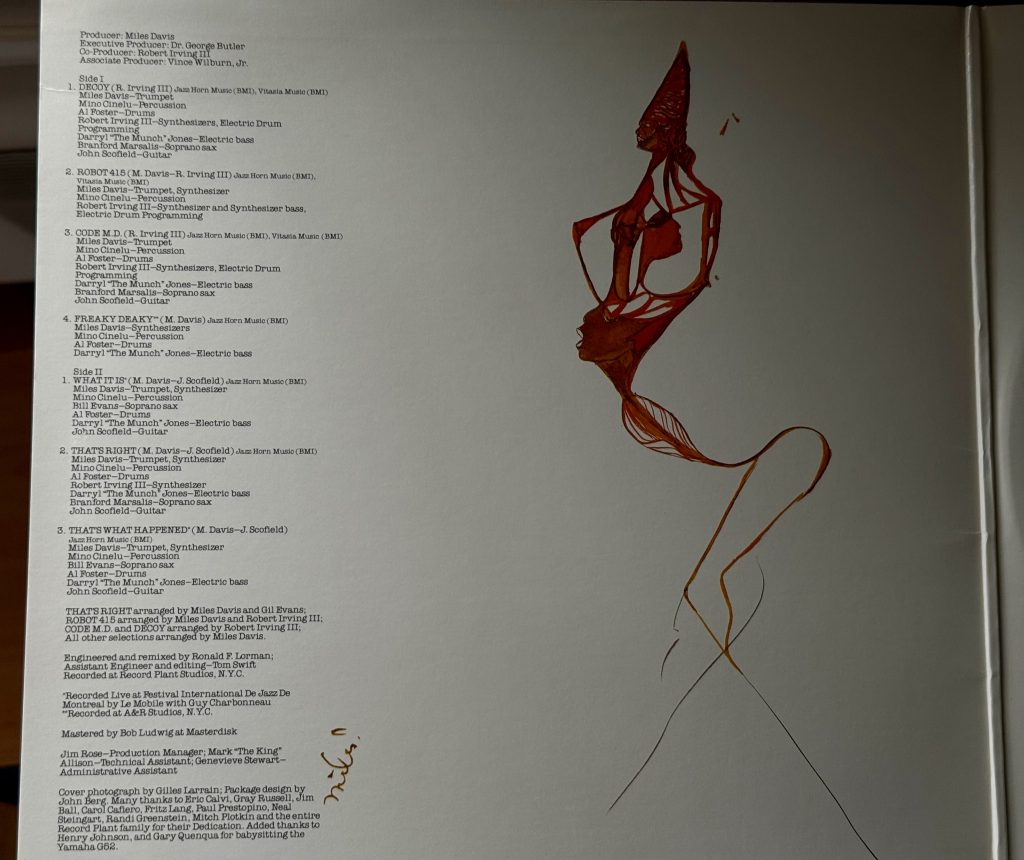
Miles may have set out to record “Rockit,” but that definitely didn’t happen; between Scofield’s virtuosity, Branford’s imagination, and the odd harmonic statements of Irving, this band was still firmly in a jazz space. But this material did keep him exploring the boundary between jazz and more popular forms of music—something he leaned into even further on his next release. Before we go there, we’re going to hear how other voices—and coincidentally another Marsalis—tried to pull the form back to something closer (perhaps) to its roots.
You can listen to this week’s album here:

